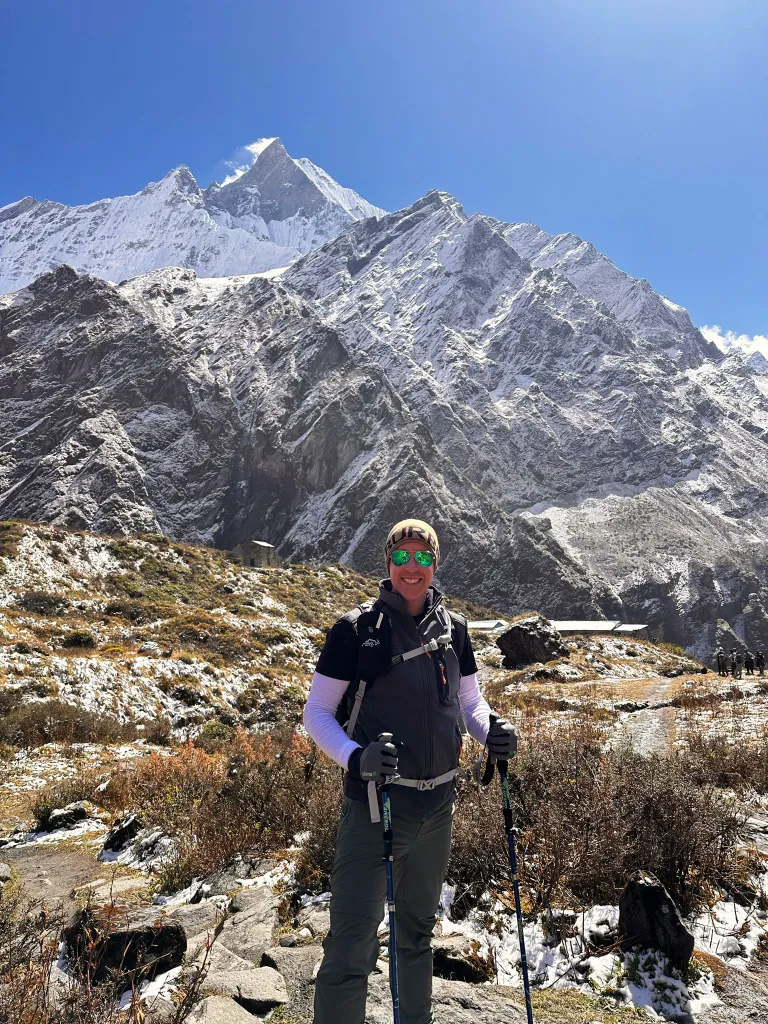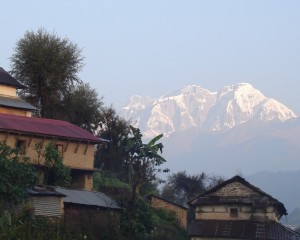What is the Difficulty Level of the Nar Phu Valley Trek?
You want to experience the charm of the Annapurna Circuit. But trying to do something different and experience off-the-beaten trail and wander around the hidden gems. Nar Phu Trek is the perfect getaway for that.
Opened in 2002, the Nar Phu Trek trail is an extraordinary opportunity to explore remote villages, highlighting the ancient Tibetan lifestyle in the stunning landscapes of the Annapurna Region.
Following the trail of the Annapurna Circuit Trek through Koto, you branch eastwards toward Nar Phu Valley. Alongside your trekking journey, you are supported by the majestic white Annapurna II, Gangapurna, Himlung Himal, Tilicho Peak, and Pisang Peak. Moreover, the architectural style, the charm of nature, and cultural heritage are a once-in-a-lifetime experience.
Since it is a restricted trekking area, many trekkers have concerns about its difficulty and trail. After conducting successful trekking for three decades, we can assure you that the trail of Nar Phu Valley is moderate. Besides, the best part about the region is that it is a rain-shadow area, meaning you can explore it even in the monsoon season. Let us save you time and explore all the details of the Nar Phu Valley Trek.
Overview of Nar Phu Valley Trek
Nar Phu Trek is a marvellous destination in the lap of the Himalayas for immersing yourself in the region's raw beauty and Tibetan culture. The major highlight of the trail is Nar and Phu village. It is a time to travel to the past, even Tibet forgot a long time ago.
The trail starts through the Besisahar and follows the branch eastwards towards Nar Phu Valley. As you walk beside Nar River and the narrow gorge, you wind up at the small settlement of Odar. The place where you make the lunch stops in that teahouse with friendly smiles and savoury meals. After the tasty and hearty warm, you are led through pine, rhododendrons, and bamboo.
The fun fact is that there is a soothing delight of hot springs along the trail waiting for you to take a refreshing break. Now, you reach the scenic villages of Meta, which have stunning landscapes with the far sight view of the monastery at Nar Phedi.
The next day, you are led to Phu village, which has some of the most memorable and unspoiled views on the trek. The trail passes below the unsettling slopes of Kangaroo Himal and Chyakhu before winding through the village of Kyang.
Phu is a remarkable village that moves forward in time as it showcases its history, which dates back to at least the 5th century. The structures of building blocks lie side by side, one on top of the other, along the sloping hill at the heart of the village. They somehow create the look of the town, like terraced fields made of stone.
The spinning prayer wheel, encrypted Mani walls, and the appealing monastery is a treasure of ancient Tibetan culture preserved in time. Trust us when we say that every corner of the trail is captivating and heaven for photographers.
Besides, the valley of Phu is also the place where you branch out to the Himlung base camp (4920 meters). You have a rest day to explore the Phu so that you can go on a side trip to the base camp and its alluring views and glacial surroundings. Likewise, you can relax in Phu for the day and use the time further to explore the meandering village and its many charms.
Now, the trail heads westward to Nar Phedi and its monastery, where you can experience the culture and customs of the Tibetan people overnight. After diving into the alluring culture, the following day, climb to the impressively sited village of Nar. Moreover, the town provides more stunning views of the Himalayas and a cultural reward for the local people.
The trek through the valley ends as you ascend above the Kang La Pass (5320 meters). You take your time to immerse yourself in the beauty of the high elevation and then descend rocky to Ngawal. Finally, you end the trek hike back to Chame and take the return drive to Pokhara.
How Difficult is Nar Phu Valley Trek?
Nar Phu Valley Trek is a moderate adventure that is ideal for beginner and experienced trekkers. There are different challenges you should know when embarking on the journey of the Nar Phu trail.
Altitude and Acclimatization
You have to walk between 6 to 8 hours daily and cover a distance of 12 to 15 kilometers. As the trail is demanding, you have to start early to complete the long days on the trail. After that, the trail reaches elevations above 5300m, especially at Kang La Pass. At such high elevations, the air level is reduced, which can cause altitude sickness. Headache, shortness of breath, vomiting, and nausea are the common symptoms of the condition.
Acclimatization is the best way to prevent the condition. Besides the slow pace, staying hydrated is another factor. Diamox can be a great way to alleviate altitude sickness. The professional guide from Nepal Vision Trek has first aid training to help you with the first aid requirement. Although in a severe condition, it is better to seek medical advice.
Trail Conditions
The trails along the Nar River and winding above are rocky and uneven. You encounter narrow paths along cliffs and deep canyons, especially when you ascend above the Meta and Nar Phedi. It requires you to have careful navigation.
Moreover, the trek includes elevation gain with steep ascents and descents. It demands physical stamina and mental toughness to deal with the demanding sections of the trail.
Weather Condition
Spring and autumn are the best times to visit the Nar Phu Valley Trek. Interestingly, the Nar Phu Valley lies in the rain shadow area, meaning you can explore the region even during monsoon season. So, the trail can be explored most of the year. But before that, you should discuss your plans with your trekking operator.
Who is the Trek Suitable For?
The Nar Phu Valley Trek is ideal for moderate to experienced trekkers with good physical fitness. Beginners can also enjoy the trek if they have good preparation in advance. It requires endurance and strength to manage long walking hours. You have to do training with cardio, strength exercises, and local hikes.
Tips To Prepare for Nar Phu Valley Trek
With careful planning and preparation, every trekker can navigate the difficulty of the Nar Phu Valley Trek. Physical fitness, mental stamina, gear, and the permit are the primary factors you should understand well.
Physical Fitness
To have good physical fitness, you should start by taking long walks and climbing stairs to give your body practice on uneven terrain. Similarly, engage in cardio exercise and strength training in your workout routine to build up stamina and endurance.
Mental Fitness
You should prepare mentally for the challenge with visualization techniques. Besides, relaxation methods should be implemented to manage stress and anxiety during the trek. Throughout your journey, you should maintain a positive attitude toward the trek and remind yourself of the rewards of nature and culture.
How Much is the Permit for Nar Phu Valley Trek?
When trekking with Nepal Vision Trek, all the permit fees are covered in the package. There are two permits you should take for the trek that are taken by our guides on behalf of you.
- The Annapurna Conservation Area Permit (ACAP) costs 3000 NPR per person.
- Nar Phu Valley Restricted Area Permit costs 75 USD per week for (December to August) and 100 USD per week for (September to November).
Essential Gear for Nar Phu Valley Trek
- Clothing: Warm layers, waterproof jacket, trekking pants, gloves, and a hat.
- Footwear: Waterproof trekking boots, comfortable socks, and camp shoes.
- Sleeping Gear: Sleeping bag (rated for -10°C to -15°C).
- Accessories: Trekking poles, sunglasses, headlamps, water bottles, and a first aid kit.
To wrap up, the Nar Phu Valley Trek is a unique and rewarding adventure in the restricted zone of Nepal. The stunning landscapes, rich Tibetan culture, and adventurous trails adding it to an unforgettable experience.
Though demanding in terms of fitness and preparation, the trek’s breathtaking views, ancient villages, and spiritual essence make every effort worthwhile. If you are interested in making your next adventure in the Nar Phu Valley Trek alluring, feel free to reach out to Nepal Vision Trek for expert guidance.
FAQS






